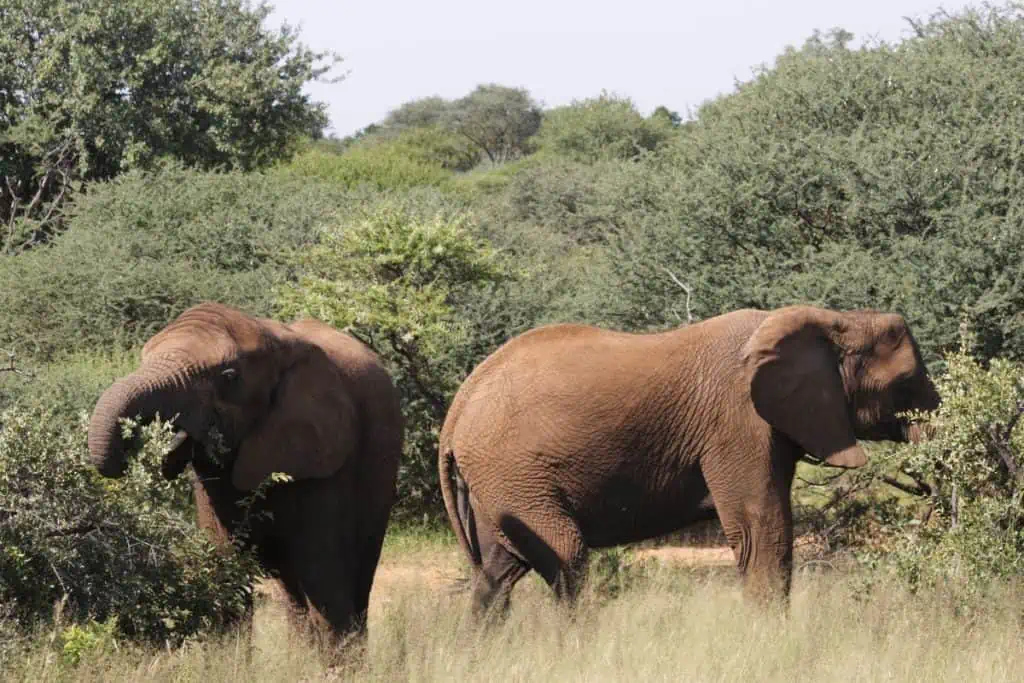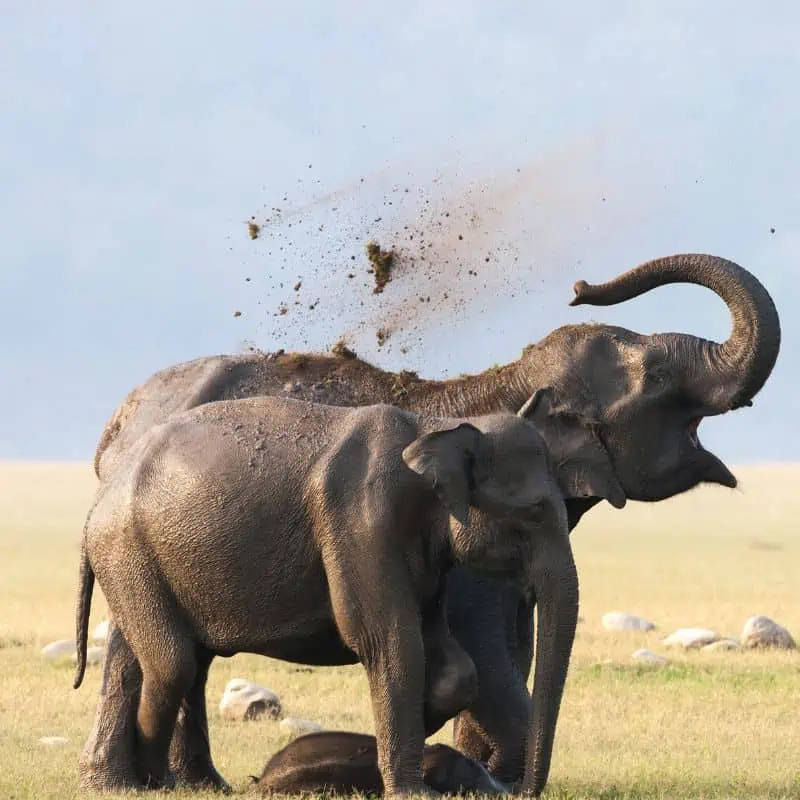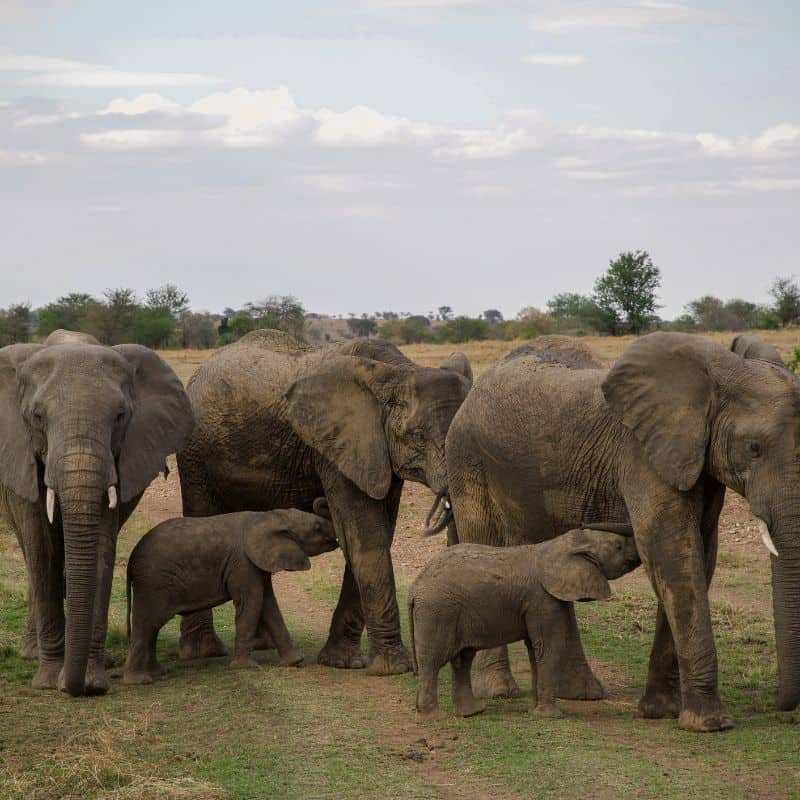Elephants are on the list of the few wild animals led by Matriarchs. Female elephants have an essential role in their herd, while the males live separately. How are female elephants different, and what roles do they take on?
A female elephant is called a cow. On average, adult females are 9 to 13 feet tall and weigh between 6,000 to 8,000 pounds. Elephant cows also have smaller tusks than males. They are the more social ones and take on the leadership role in a herd. Female elephants have the longest gestation period among mammals and are devoted mothers.
Females are integral members of an elephant herd. This article discusses ten interesting facts about them.

- 1. A Female Elephant is Called a Cow
- 2. Cows Are Smaller and Lighter Than Bulls
- 3. Elephants Have the Longest Pregnancy Among Mammals
- 4. Female Elephants Are More Social
- 5. Elephant Herds Are Led by Matriarchs
- 6. Cows Make the Best Mothers
- 7. Adult Female Elephants Have Two Mammary Glands
- 8. All Females Babysit Other Calves From Other Mothers
- 9. Female Elephants Don’t Always Have Tusks
- 10. Elephant Cows Have Multiple Mates
- Final Thoughts On Female Elephants
- FAQS
1. A Female Elephant is Called a Cow
Elephants are similar to cattle in terms of being herbivores and sharing the same terminology for males, females, and their babies.
Female elephants, just like female cattle, are called cows.
Males are known as bulls, while their babies are called calves.
2. Cows Are Smaller and Lighter Than Bulls
Like most animal species, female elephants are smaller than their male counterparts. An adult elephant cow reaches a height between 9 to around 13 feet.
On average, males stand almost 2 feet taller than females.
Besides their height, female elephants also weigh less than males. Males are almost double the weight of females.
Overall, females are generally smaller than males, making it easier to distinguish both genders.

3. Elephants Have the Longest Pregnancy Among Mammals
Cows have the most prolonged pregnancy among all other mammals. If you think nine months is a lot, imagine the pregnancy period for female elephants.
That’s usually between 18 to 22 months.
Researchers suggest that this extended period is because of elephants’ large size and their well-developed brains.
Elephant brains develop well through this long gestation period and are nearly fully developed at birth.
4. Female Elephants Are More Social
In a herd of elephants, females are the most social ones, while the males stay in a small group or roam alone.
Males will sometimes remain in bachelor herds consisting of other male elephants.
Females bond more strongly with their relatives and little ones in their herds. Their herd comprises close relatives, immediate family, and a wider social network. That may include other female elephants as well.
In these herds, an elder female elephant usually guides the rest.

5. Elephant Herds Are Led by Matriarchs
As we discussed above, female elephants live in herds without males. Yes, it’s all girl power.
Without a male member in a pack, the largest and oldest female becomes the matriarch.
So, elephant herds are usually led by the older female who makes all the decisions. She is responsible for teaching the young members and searching for shelter and food.
The rest of the herd silently walks behind her and follows her orders.
Usually, an elephant herd has six to twelve elephants, but there can always be more. When the pack becomes too big, the matriarch dictates the formation of a new herd.
6. Cows Make the Best Mothers
You might have heard the quote about the incredible bond between a mother and her children. Well, there’s no better example in the wild than mother elephants.
Female elephants are amazing mothers. They raise their little ones and keep them by their side till their teenage years.
Female elephants sometimes even feed their little ones for as many as ten years. From birth, the calf sticks by its mother’s side, relying on her for guidance and food.
The little ones may take food from their mother’s mouth using trunks.
7. Adult Female Elephants Have Two Mammary Glands
Adult elephant cows have two mammary glands or breasts.
You will see these between the front legs of the female elephant. During pregnancy and breastfeeding, these mammary glands become prominent.
Yet, they also remain noticeable after the breastfeeding period is over. So, this becomes a major differentiating factor between male and female elephants.
8. All Females Babysit Other Calves From Other Mothers
Allomothering is a typical noticeable behavior amongst female elephants.
Young female elephants will care for the other calves in the herd to learn and improve their mothering skills.
During this time, they also learn other essential things about motherhood that can benefit them later.

9. Female Elephants Don’t Always Have Tusks
In most cases, female and male elephants have visible tusks like African elephants. Yet, the tusks of male elephants are usually longer than females.
Female Asian elephants have a set of prominent tusks called tushes.
However, this isn’t always the case. Sometimes, even female Asian elephants don’t have tusks. Overall, whether female elephants have tusks or not depends on the region and subspecies.
10. Elephant Cows Have Multiple Mates
Another interesting thing about female elephants is that they don’t always have one mate. Throughout their lives, elephant cows can have numerous mates in the wild.
Once they mate, an elephant cow gets pregnant for 22 months.
The newborn stays by its mother’s side as she teaches it everything to survive in its native habitat. The cycle then continues!
Final Thoughts On Female Elephants
From leading the herd to raising the little ones, elephant cows have it all under their control.
Their role in an elephant herd is genuinely unchallenged.
FAQS
Are Female Elephants Aggressive?
Usually, elephants are very peaceful animals. However, they can sometimes become aggressive around their young ones. All elephants become aggressive when they feel threatened, harassed, sick, or injured.
How Do Elephant Cows Select a Mate?
During the courtship time, female and male elephants rub their bodies against one another. They may also wrap their trunks around one another. Females run away, and males chase them. This chasing can go on long before these elephants mate.
Do Female Elephants Fight?
It is common for male elephants to fight against one another, but females rarely do. If two elephant cows fight, they want to exert and establish their authority.
